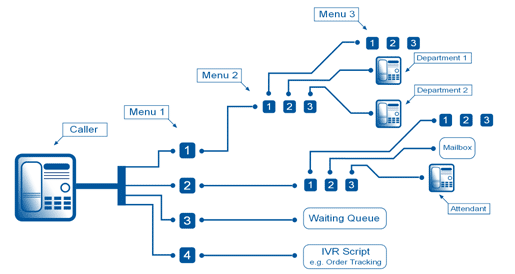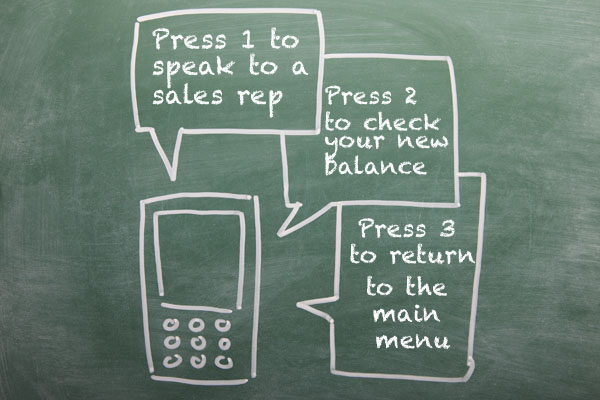What Is An IVR System?
VR stands for Interactive Voice Response, a technology that automates routine customer service interactions by allowing callers to interact using touch tone digits or their voice. A basic example of an IVR application is an automated attendant or voice menu: callers are presented with a recorded menu and respond by selecting a digit or, in some cases, by entering an extension number. IVR will direct customer's call to a right person or right department without an operator. The automated attendant eliminates the need for a live operator to handle the call.

Key Facts & Features
All IVR systems are capable of prompting (playing audio) and collecting digits from the caller. Replacing the touch-tone interface with a voice interface requires additional software and significantly increases the expense of the platform.
IVR platforms usually provide a means for recording audio from the caller. This can be used to record prompts, but the quality is generally quite poor. Most systems will also accept pre-recorded audio, and there are professional voice talents that offer custom prompts.
Traditional IVR systems interface with the PSTN or a PBX system using either analog or digital trunks. More recent IVR systems support connections over IP using SIP. Legacy platforms tend to license by the port, while IP systems license by the concurrent call.

